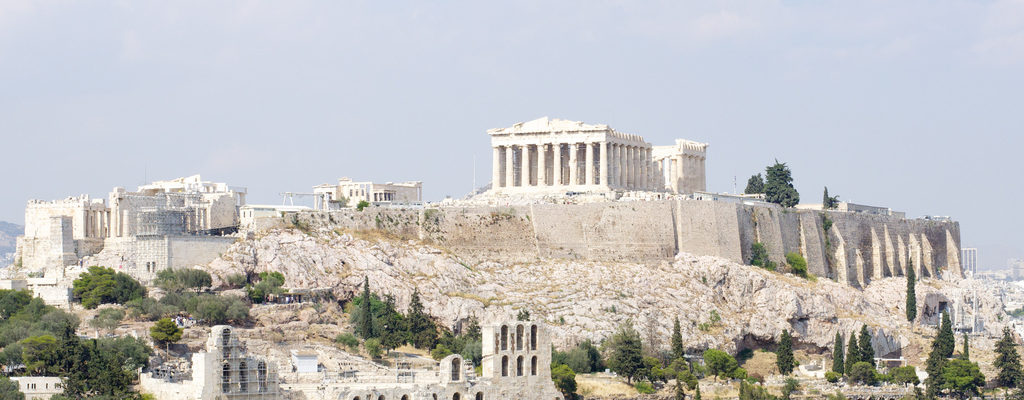The Acropolis is the heart of the city of Athens. It is a steep limestone crag (156m above sea level) where, during the Pisistratid era, in the second half of the VIth century BC, the first religious buildings were raised.
When Peisistratos instituted the celebrations in honour of the goddess Athena, known as the Greater Panathenaea, he consecrated an altar to Athena Nike (Victory); a ramp was built, across which the procession could ascend the Acropolis, where the first temples were also put up: the Hekatompedon (Temple of a Hundred Feet) in 570-566 BC, in the area where the Parthenon was later to stand, and a Temple of Athena, in the 520s.
The original Propylon (ornamental gateway of entry to a sacred or public area) and a small temple built in the local limestone (poros) next to the altar of Athena Nike both date to the years of the Persian Wars (490-480 BC).
During this period, the Hekatompedon was dismantled, and work on the Parthenon began, but it was not completed, due to the Persian invasion of 480 BC.
The Acropolis was reconsecrated and rebuilt from 448 BC onwards, after the signing of the treaty of peace between Athens and the Persians (the “Peace of Kallias”, which was actually negotiated by Perikles).

Do you want to know more about the Acropolis and the history of Athens?
Check out our guidebook to Athens, with detailed history and Past & Present images of the Acropolis, the Parthenon, the Propylaea and all the greatest historical and archaeological sites of the greek city.

